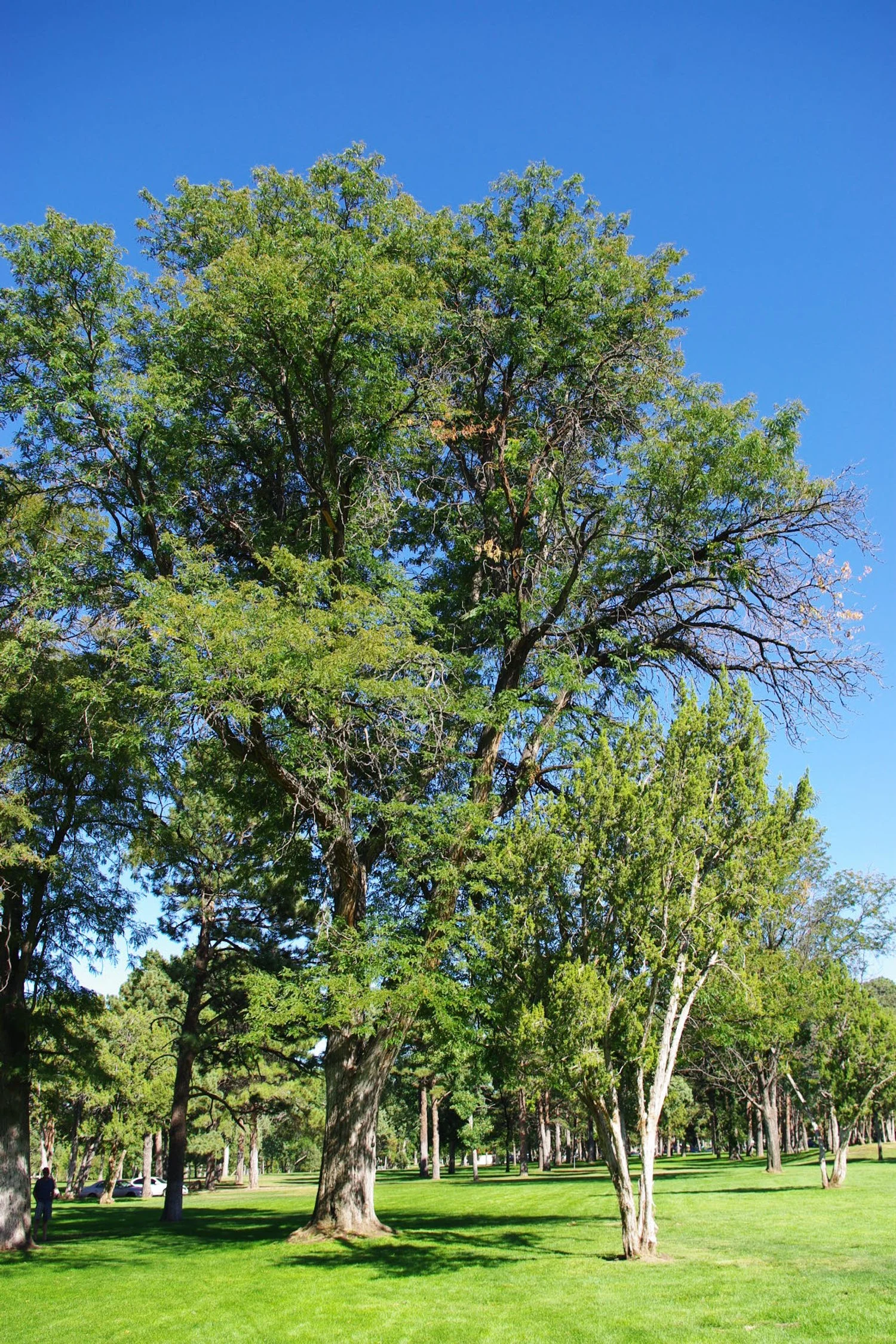honeylocust (Gleditsia triacanthos)
Second place (tied) honeylocust in Pueblo at City Park.
Species info:
Leaves: Alternate, pinnately compound with 8–14 leaflets; each leaflet ½–1 inch long, oval, and smooth-edged. Bright green in summer, turning clear yellow to yellow-green in fall. Leaves fall early.
Leaflets: 8–14 per compound leaf; occasionally bipinnate on older shoots.
Leaf Surface: Smooth, glossy green above, lighter beneath.
Bark: Grayish-brown with long, narrow ridges and deep furrows on older trees.
Flowers: Small, greenish-yellow, fragrant but subtle; appear in clusters between May and June.
Fruit: (On thornless types, typically absent.) When present, long, twisted seed pods up to 12–18 inches; reddish-brown when mature.
Botanical: Gleditsia triacanthos
Family: Fabaceae
Mature Height: 30–70 feet
Canopy Spread: Comparable to height; open, spreading crown
Foliage Type: Deciduous
Tree Shape: Vase-shaped with open canopy; allows filtered light beneath
Growth Rate: Fast
Fruit: Most varieties produce pods that can be messy, but are edible when immature
Fall Color: Yellow to yellow-green
Water Use: Low to moderate; highly drought-tolerant once established
Hardiness: Zones 4–9
Soil Preference: Adaptable; tolerates drought, high pH, salt, and compacted soils
Wildlife Value: Provides light shade for turf; pods (if present) eaten by wildlife
Pests/Pathogens: Susceptible to canker and root collar rot in Colorado; also minor issues with mimosa webworm or honeylocust plant bug
Planting Recommendations: Recommended for most sites along the Front Range and the Western Slope; avoid Sunburst as it is overplanted. Wrap young trees in winter to prevent sunscald.
Information Sources:
Front Range Tree Recommendation List
Michael Dirr, Manual of Woody Landscape Plants (University of Georgia, 1990)
Colorado State University Extension, "Honeylocust Diseases," 2014.


